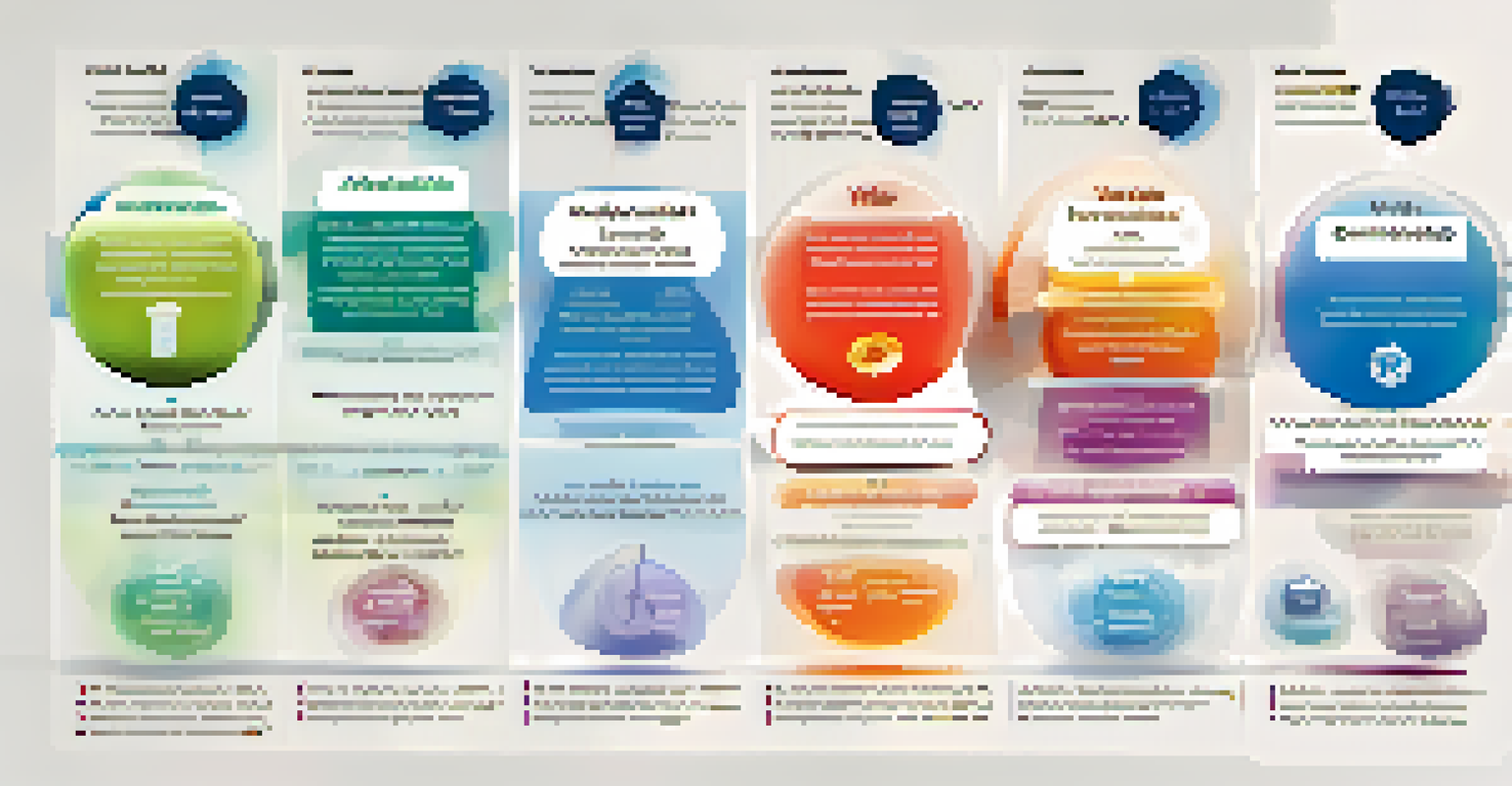Vaccine Platforms: Understanding Different Technologies Used

What Are Vaccine Platforms and Why Do They Matter?
Vaccine platforms refer to the underlying technologies that enable the development of vaccines. Understanding these platforms is crucial because they dictate how vaccines stimulate an immune response. They can also influence factors such as production speed, efficacy, and safety.
Vaccines are the most effective way to prevent infectious diseases and save lives.
Different vaccine platforms have unique characteristics, making some more suitable for certain diseases than others. For instance, some platforms can be adapted quickly to address emerging pathogens, which has been vital during public health crises like the COVID-19 pandemic. This adaptability is one of the reasons why vaccine platforms are a hot topic in scientific discussions.
As we delve deeper into the various types of vaccine technologies, we’ll see how each platform plays a specific role in combating infectious diseases. By understanding these technologies, we can appreciate the complexities and innovations involved in vaccine development.
Inactivated and Live Attenuated Vaccines Explained
Inactivated vaccines use pathogens that have been killed or inactivated, making them unable to cause disease. This approach is often used for vaccines like the polio vaccine. The immune system still recognizes the inactivated pathogen, allowing it to mount a defense without the risk of illness.

On the other hand, live attenuated vaccines use weakened forms of the pathogen. These vaccines, such as the measles, mumps, and rubella (MMR) vaccine, are made from living but weakened viruses. Because they closely mimic an actual infection, they often provide strong and long-lasting immunity.
Vaccine Platforms Shape Immunization
Understanding different vaccine platforms is essential as they influence the immune response, production speed, and safety of vaccines.
Both types of vaccines have their pros and cons. While inactivated vaccines are generally safer for individuals with weakened immune systems, live attenuated vaccines typically require fewer doses for effective immunity.
Subunit, Recombinant, and Conjugate Vaccines: An Overview
Subunit vaccines contain only parts of the pathogen, such as proteins or sugars, rather than the entire germ. This makes them safer and less likely to cause adverse reactions. The human papillomavirus (HPV) vaccine is a prime example of this type of vaccine.
The future of vaccines is about personalization and precision, tailoring vaccines to individual needs.
Recombinant vaccines take this a step further by using genetic engineering to produce antigens that trigger an immune response. The hepatitis B vaccine is created using recombinant DNA technology, which allows for a more targeted approach to immunity.
Conjugate vaccines link the pathogen's polysaccharides to proteins, enhancing the immune response. This technology has been particularly effective in vaccines against bacteria, such as the Haemophilus influenzae type b (Hib) vaccine. Each of these methods exemplifies innovation in vaccine development.
mRNA Vaccines: A Game Changer in Vaccine Technology
mRNA vaccines represent a revolutionary approach to immunization by using messenger RNA to instruct cells to produce a protein that triggers an immune response. This technology gained widespread attention during the COVID-19 pandemic with the Pfizer-BioNTech and Moderna vaccines. Their rapid development showcased the potential of mRNA technology.
Unlike traditional vaccines, mRNA vaccines do not use live pathogens, making them safer and quicker to produce. Additionally, they can be adapted easily if new variants emerge, which is crucial in our ever-evolving battle against infectious diseases.
mRNA Vaccines Revolutionize Development
mRNA vaccines have transformed vaccine technology, enabling rapid production and adaptability against emerging pathogens.
The success of mRNA vaccines has opened doors for further research and applications beyond COVID-19, potentially paving the way for vaccines against other illnesses, including cancers and various viral infections.
Vector-Based Vaccines: Using Viruses for Good
Vector-based vaccines utilize harmless viruses to deliver genetic material from a pathogen into the body. These vectors act as delivery vehicles, teaching the immune system to recognize and combat the real pathogen. The Ebola vaccine is one example of this technology in action.
This method leverages the natural ability of viruses to enter cells and trigger an immune response without causing disease. Because the vector virus is modified to be harmless, it poses no risk to the recipient, making it a promising option for future vaccines.
Vector-based vaccines can also be combined with other technologies, such as mRNA, enhancing their efficacy. This versatility highlights the importance of innovation in vaccine development.
DNA Vaccines: The Next Frontier in Immunization
DNA vaccines are an emerging technology that involves injecting plasmid DNA containing the genes for pathogen proteins. Once inside the body, these genes instruct cells to produce the targeted proteins, triggering an immune response. While still largely experimental, DNA vaccines have shown promise in animal studies and early human trials.
One of the key advantages of DNA vaccines is their stability, allowing for easier storage and transportation. This could be especially beneficial in resource-limited settings where maintaining cold chain logistics is challenging.
Future Innovations in Vaccine Technology
Ongoing research into new vaccine platforms promises to broaden our ability to combat diseases, including cancers and chronic conditions.
Although more research is needed to fully understand their potential, DNA vaccines could revolutionize the way we prevent diseases, offering a new tool in our vaccination arsenal.
The Importance of Vaccine Platforms in Public Health
Understanding different vaccine platforms is vital for public health planning and response. Each technology brings unique strengths and weaknesses, influencing how quickly and effectively we can respond to outbreaks. For example, mRNA vaccines allowed for rapid deployment during the COVID-19 pandemic, showcasing the need for versatile platforms.
Moreover, as global travel increases and new pathogens emerge, having a variety of vaccine technologies at our disposal will be essential. This diversity ensures that we can tailor responses to specific threats, adapting strategies as needed.

Investing in research and development for multiple vaccine platforms not only prepares us for future pandemics but also enhances our overall health security. By prioritizing innovation in vaccine technology, we can save lives and protect communities worldwide.
Future Directions: Innovations in Vaccine Technology
As we look to the future, the landscape of vaccine technology continues to evolve. Researchers are exploring novel platforms, including nanoparticle vaccines and therapeutic vaccines that not only prevent diseases but also treat them. These innovations hold promise for addressing a broader range of health issues, including cancers and chronic diseases.
Collaboration between governments, pharmaceutical companies, and research institutions will be crucial in advancing these technologies. By pooling resources and expertise, we can accelerate the development of new vaccines that meet the challenges of tomorrow.
Ultimately, the future of vaccines is bright, with the potential to protect against diseases that were once considered untreatable. By staying ahead of the curve in vaccine technology, we can ensure a healthier future for all.